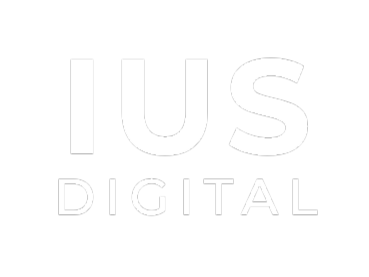The Real ROI of Content Marketing: What Numbers Matter?
Most teams can report pageviews and likes, but very few can show how a single article moved pipeline or retention. That’s the difference between “content as cost” and “content as growth engine.” For content marketing, real return boils down to three outcomes: revenue, efficiency (lower CAC, faster cycles), and long-term value (loyalty, referrals, brand trust). If your reports don’t connect content to at least one of these, you’re tracking activity, not impact.
1. Vanity vs. Value: Which Metrics Still Matter?
“Vanity metrics” like impressions, likes, or raw sessions are just early signals, not proof of success. Use them to ask “did we reach anyone?” or “did the topic and format earn attention?”
What actually matters is value metrics like:
Engaged sessions (time, scroll depth, multi-page visits)
Content-led subscribers and leads
Assisted conversions (demo requests, trial sign-ups, high-intent forms)
Want help identifying which of your metrics actually matter? Contact IUS Digital Solutions.
2. Full-Funnel KPIs That Actually Show ROI
Think in three layers: attention, progress, and profit.
Top of funnel – Qualified attention
Track:
Engaged sessions (not just visits)
Share of search for priority topics
New leads or subscribers attributed to specific content
If a high-traffic article drives no leads in 60–90 days, keep it as awareness, but stop treating it as a revenue asset.
Mid-funnel – Progress toward revenue
Track:
Subscriber → MQL → SQL conversion
Opportunities where buyers consumed at least one mid-funnel asset
Sales-cycle length for content-engaged vs non-engaged leads
Quick fix: Turn sales’ most common objections into mid-funnel content and measure how often it appears in winning journeys.
Bottom funnel and beyond—Revenue and retention
Track:
Content-sourced and content-influenced pipeline and revenue
Close rate and deal size for content-engaged opportunities
Renewal, expansion, and referral rates tied to education content
Quick fix: Connect analytics to your CRM, standardise UTM tagging, and build three simple views: first-touch, last-touch, and multi-touch content.
Need full-funnel reporting built for your business? Visit our website or contact us today.
3. The Tech Stack Behind Modern Content ROI
High-performing teams rarely rely on a single tool. They typically combine:
First-party, event-based analytics to track scroll, video plays, downloads, and micro-conversions.
CRM & marketing automation to see which content your best customers consumed.
Customer data platforms / identity resolution to unify behaviour across devices and channels.
AI-driven scoring models that find patterns (for example, “people who read pricing + 2 case studies are 3× more likely to buy”) and prioritise those leads.
If you’re only glancing at top-line traffic once a month, you’re ignoring the data that proves ROI. Want a modern, ROI-ready content tech stack? Contact us to audit your current setup.
4. Measuring ROI in a Values-First World
Today’s buyers don’t just ask, “Is this product good?” They ask, “Is this brand good for people and the planet?” That’s where strategies like Sustainable Marketing, Corporate Social Responsibility (CSR), and Conscious Consumerism come in. To measure this layer of ROI, look at whether content built around Ethical Consumer Behavior and purpose-driven branding improves sentiment, repeat purchase rates, and engagement with your impact stories.
Campaigns using Impactful Advertising and Social Impact Marketing, especially for audiences that care about Environmental Consciousness, can be evaluated through participation (donations, sign-ups, event attendance) and share-of-voice in relevant conversations. Content rooted in Authentic Brand Messaging and a clear Responsible Branding Strategy should highlight Ethical Product Promotion, Community Engagement, and Transparent Marketing Practices. Track how often these stories are consumed by loyal, high-LTV customers.
Over time, those signals feed a more resilient, Values-driven Marketing engine—especially when you support real Social Justice Advocacy instead of one-off statements.
5. Common ROI Mistakes and Quick Fixes
Measuring content in a silo
Problem: Content reports traffic; sales reports revenue; no one connects the dots.
Fix: Build shared dashboards that blend web analytics, CRM, and campaign data. Review content-influenced pipeline together every month so everyone sees the same story.
Confusing popularity with profitability
Problem: Chasing viral spikes, with articles untagged by stage or persona, so high-traffic pieces that never convert look “successful.”
Fix: Tag every asset by funnel stage and audience, then segment results by qualified vs non-qualified leads. Prioritise content that attracts and converts the right people, not just more people.
Want a unified dashboard that blends analytics + CRM? Contact us to build one for you.
6. Turning Insight into Action with IUS Digital Solutions
You don’t need a huge team to get serious about content ROI—just clear goals, connected data, and a practical framework.
At IUS Digital Solutions, we help brands move from “content for the sake of content” to assets that are mapped to the funnel, tracked inside your CRM, and tied directly to revenue, retention, and brand trust.
If you’re unsure whether your current content is actually paying off, we can audit your funnel, refine your KPIs, and set up smarter measurements. Ready to see what your content is really doing for your business? Contact us, and let’s turn your storytelling into measurable, sustainable growth.


